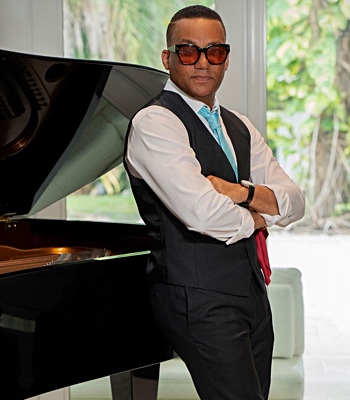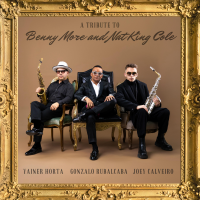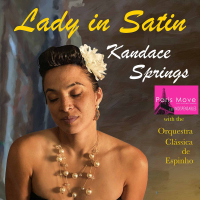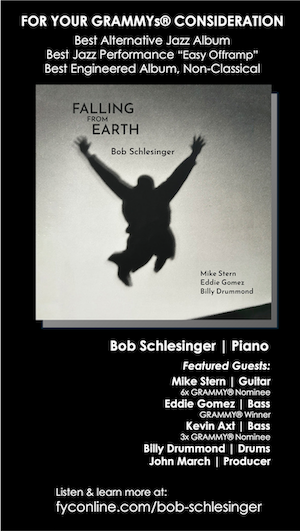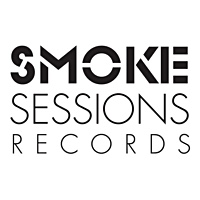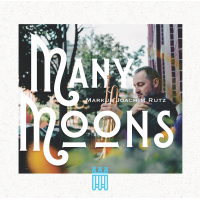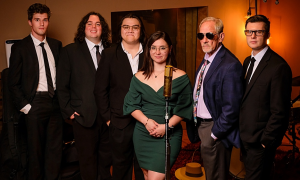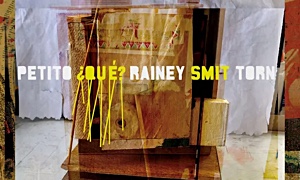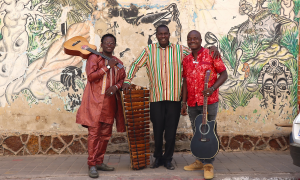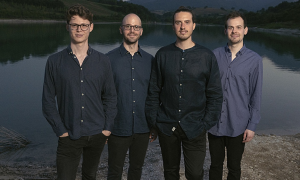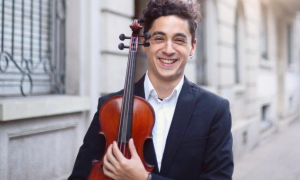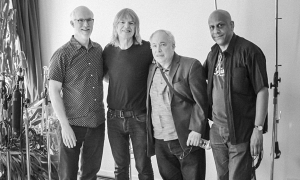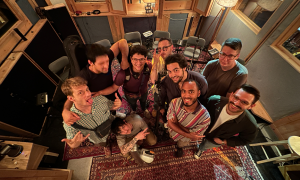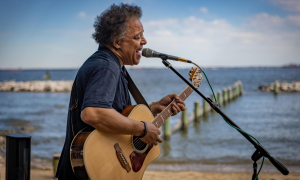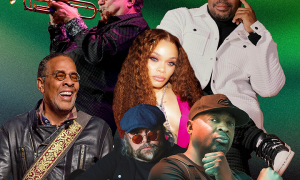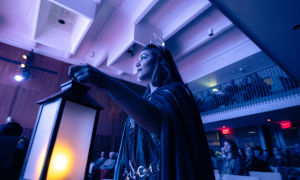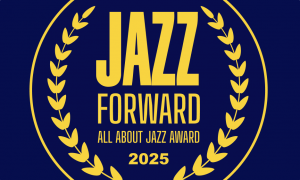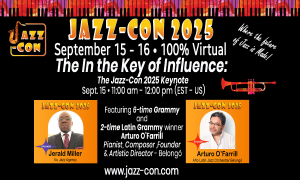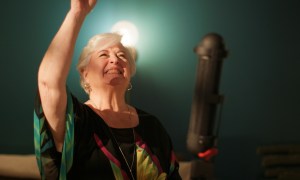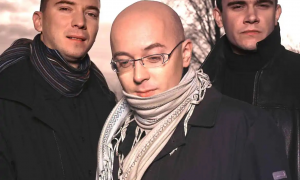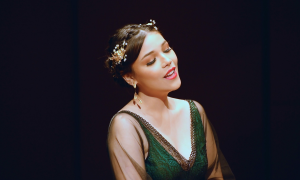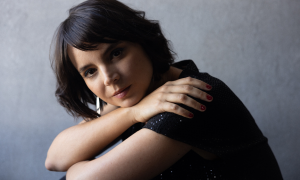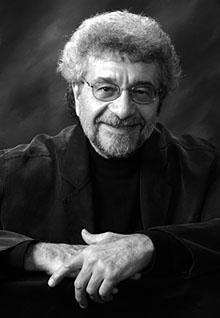
Michael Abene has always been a double threat. In addition to being a gorgeous pianist and accompanist, he's a towering arranger of big bands, orchestras, singers and instrumental ensembles. Fans of Maynard Ferguson are probably most familiar with his piano playing and arrangements for the band's recordings for Roulette and Mainstream in the 1960s. These days, Michael has been keeping busy, as you'll soon read.
I recently caught up with Michael for a JazzWax interview after writing about him in a recent post on Jackie Paris and Anne Marie Moss at the Maisonette in 1974.
Here's my conversation with Michael:
JazzWax: Where did you grow up?
Michael Abene: In the Williamsburg section of Brooklyn. My mother’s Italian parents owned the building we lived in. They were lovely people and spoke little English. I had a sister, Marie, who was 13 years older. She passed away a few years ago. [Photo above of Brooklyn in the 1940s, courtesy of Life magazine]
JW: What did your father do for work?
MA: He was a barber and a very good rhythm guitarist in the Freddie Green style. He also had a big band. The drag was he'd get home late from gigs and then had to open his barbershop at 8 a.m. Eventually, he gave up the big band. He was born in New Orleans and was brought to Brooklyn as a young child. His father, Charles, also was a barber and a hell of a violin and mandolin player. Charles had a couple of different wives, so my father had two brothers and two sisters. Charles was born in Sicily and migrated to New Orleans. [Photo above of a Brooklyn barbershop in the 1950s]
JW: Was there music in your father’s family?
MA: My aunt played great stride piano. She couldn’t read a note of music, but she could play in any key. The same was true for my father. They’d get together and play at my grandparents’ house. The parties could last for a couple of days. Great food, great wine and great music. They were fun to be around growing up. It didn’t have to be a holiday for a party.
JW: And your mom?
MA: My mother was a homemaker. She was the only one in her family born in America. All of her brothers were born in Sicily and came over as young children. All spoke fluent English except when speaking to their parents.
JW: Was piano your first instrument?
MA: Piano was my first and only instrument. I started studying when I was very young with the pianist from my father’s big band. I loved playing but hated practicing. I didn’t know yet if this was going to be my life’s work.
JW: Did you listen to jazz records growing up?
MA: My father had a number of jazz 78s by Benny Goodman, Count Basie and Louis Armstrong, including the Armstrong-Earl Hines duets. He also had some early Duke Ellington and records by Peggy Lee with then husband and guitarist Dave Barbour. When I was a kid, Basie and Ellington had the biggest impact on me. Little by little, the idea of what the music looked like on paper started to stir my interest in arranging.
JW: Who taught you to arrange?
MA: I must tell you, I’ve never had formal training in composition or arranging. I picked them up by listening, trying to analyze scores and picking other musicians’ brains. It was a serious trial-and-error method.
JW: How long did you live in Brooklyn?
MA: After my older sister married, she and her family lived around the corner from us in Brooklyn. Then one day, her family moved to the suburbs, in Farmingdale, Long Island. After they moved, my mother decided we all should move to be together. My maternal grandparents had passed away, so my father, mother and two of her brothers bought the house next door to my sister.
JW: At what point do you start to love the piano?
MA: Teddy Wilson was my first major influence and biggest inspiration. I went to Farmingdale High School and heard the school’s dance band, under the direction of trombonist and trumpeter Marshall Brown, one of the foremost jazz educators of that time. When I heard the band, I freaked. It was an epiphany. To hear people my age playing so well, I couldn’t contain my excitement.
JW: Once you were lit up by the band, what was the next step?
MA: The band’s pianist was graduating so I asked Marshall Brown if I could audition. I was about 14 at the time but could play reasonably well, even though my sight-reading was weak. He said if I could get my reading chops together over the summer, I could have the job in the fall. So I worked hard and landed the chair. The band was being tutored by John LaPorta and trumpeter Lou Mucci, who also coached the Newport Youth Band. [Photo above of Marshall Brown]
JW: How did you pull that off over a summer?
MA: All summer long, I bought tons of music—both classical and you name it—and taught myself to read written music and chord changes. The music program at Farmingdale was quite good because of Marshall Brown. He would play dance gigs at many different schools on Long Island and mini jazz concerts at the dances. We were getting a lot of notoriety.
JW: When did you start writing for big bands?
MA: My attempt at big band writing began when I was 15 for the high school dance band. Once I realized that this is what I wanted to do, I spent many hours each day checking out jazz scores published at the time as well as many classical scores. My goal was to figure out the balances between the band’s sections.
JW: How did the Newport Youth Band band come about?
MA: Shortly after Marshall left Farmingdale High School, he had an idea for creating a youth band. He went to George Wein, who also loved the idea and sought funding from the Lorillard family, which had co-founded the Newport Jazz Festival with George. The idea was to hold auditions for young East Coast musicians. Even though I had Marshall as my band director in school, I had to audition like everyone else.
JW: How did it go?
MA: I auditioned with alto saxophonist Andy Marsala. Andy was a student of John LaPorta, and we had been very close friends in school. We also had our own quintet, which included drummer Vinnie Ruggiero. The audition was held at Marshall Brown’s Park Avenue apartment. Some of the band members were baritone saxophonist Ronnie Cuber; bassists Eddie Gomez and Herb Mickman; trumpeters Nat Pavone, Alan Rubin and Harry Hall; and drummer Larry Rosen who, along with Dave Grusin, founded GRP Records. Members of the band went on to perform with Maynard Ferguson, Slide Hampton, Woody Herman, Sal Salvador, Count Basie, Thad Jones/Mel Lewis, Liza Minnelli. Some of the arrangers were Bill Holman, Bob Brookmeyer, Ernie Wilkins, Larry Wilcox, Fred Karlin, Ernie Wilkins and John LaPorta. We had a really good book of charts.
JW: You began playing in the Newport Youth Band at age 14?
MA: Yes. My father would drive me to rehearsals. He was very supportive. I was and still am very focused when it comes to writing. I had a nonet with members of the Newport Youth Band.
JW: Where else are you playing?
MA: One outlet was an area in Queens where players like Selden Powell, Buddy Tate, Billy Mitchell, Jimmy Nottingham, Clark Terry, Oliver Nelson, Papa Jo Jones and Bill Pemberton lived. I had the wonderful experience of traveling out there to play with them. There also was the Long Island Jazz Society, where professional musicians and music students would play together. I’d bring in charts and have the band play them down so I could hear them. John LaPorta was always great on giving me constructive criticism. Those times were a great learning experience.
JW: After high school, did you attend music school?
MA: I attended New York's Manhattan School of Music as a theory major with a minor in composition. I wrote a string quartet and a clarinet and piano piece. Remember, I had no academic training. Jazz education at that time was not what it is now. Pianist Larry Willis also was a student there. He and I used to go into a practice room with two pianos and play. They told us we had to leave because we were playing jazz. I lasted a year at the MSM. My excuse to my parents was that I got the gig with Maynard Ferguson.
JW: How did you get that gig in 1961?
MA: I was playing with Don Ellis in a quartet. We rehearsed at his pad in Greenwich Village. The bassist was Jimmy Garrison, and Al Francis played drums and vibes. It was a great experience because we played totally free music based on harmony and pieces where the tempo would be flexible, meaning it would move up and down according to the soloist. Jaki Byard was the pianist on Maynard’s band at the time. Don was doing some home studying with him. Jaki also played saxophone and would sometimes come to Don’s rehearsals and play. Jaki, in my opinion, was one of the most original jazz pianists and composers. Jaki was getting ready to split from Maynard’s band and asked me if I was interested in joining. I said yes, that I had heard the band many times at Birdland and always enjoyed listening to them. My audition was a dance gig in Buffalo, N.Y., and two or three weeks at Birdland. I got the gig. [Photo above of Michael Abene while in the Maynard Ferguson Band in the early 1960s, courtesy of Michael Abene]
JW: When did you start arranging for Ferguson?
MA: Right away. I re-scored two or three charts I had originally written for a nonet I had in the Newport Youth Band. I believe the first recording I was on was Maynard ’62, which was recorded in ‘61. On Si! Si! M.F., the next album, I had three charts: What’ll I Do, Born to Be Blue and My Sweetie Went Away. My favorite album with Maynard was The Blues Roar (1965). The band was augmented with five trumpets, in addition to Maynard, five trombones, Don Butterfield on tuba, Jimmy Buffington on French horn and Margaret Ross on harp. The rhythm section was me, Barry Galbraith on guitar, Richard Davis on bass and Mel Lewis on drums. Charlie Mariano was in the sax section and played a beautiful alto solo on my chart on Ray Charles’s I Believe to My Soul. [Photo above, members of the Maynard Ferguson Band on tour in Europe, boarding Icelandic Airlines for Sweden. From left, on the steps, bassist Linc Milliman, Michael Abene, saxophonist Willie Maiden and baritone saxophonist Frank Hittner. Photo courtesy of Michael Abene]
JW: Was playing in the Ferguson band paying your bills?
MA: The 1960’s was tough for jazz musicians. I made most of my income from commercials working for two jingle companies, one run by David Lucas and the other by Marc Brown. The staff musicians on the studio gigs included saxophonist Tommy Newsom and trombonist J.J. Johnson, who was a sweetheart.
JW: Time, Space & the Blues in 1968 was particularly fascinating. How did that album come together?
MA: Burt Collins and Joe Shepley conceived that project and asked me to write the charts. Shepley, Johnny Carisi and I contributed the originals. I got to know Carisi pretty well. He was among my favorite composers and arrangers. His work was very different from other arrangers, and I loved talking about music with him. Composition students should know more about him, beside the fact that he composed Israel, a jazz standard.
JW: There's only one saxophone on there.
MA: Correct, and people thought there was a reed section when in fact the only reed was Jerry Dodgion on soprano sax. He also played flute on the date. Jerry was one of the most musical people I've played with. The Collins-Shepley band was virtually all brass, and the music was quite tricky. We went into the studio with no rehearsal, ran it down once and recorded. The band was magnificent. Three trumpets, with Burt and Joe doubling on flugelhorns and Bernie Glow doubling on piccolo trumpet. Garnett Brown was on trombone and Paul Faulise on bass trombone, with Joe DeAngelis on French horn and Tony Price on tuba. The rhythm section was Bob Cranshaw on bass and Mickey Roker on drums. I played piano and conducted. We did a second recording of Lennon and McCartney songs with the same instrumentation, except Herbie Hancock played Fender Rhodes. I’m trying to get the Time, Space & the Blues music back from Joe Shepley’s widow, Helen. Some people have expressed interest in performing it.
JW: You were in Larry Elgart and His Manhattan Swing Orchestra. The band’s Hooked on Swing in 1982 must have been a big payday. It was a huge hit.
MA: It wasn’t a big payday for me, just Larry. It was fun doing the project, though. I wrote two charts and Dick Hyman wrote a couple. Dick Hyman, Jack Cortner, Sy Johnson, Bobby Scott and Dick Lieb were credited as arranging as well.
JW: You accompanied many singers on piano over the course of your career. How do you work with a singer?
MA: Playing for singers, to me, requires different approaches, which is also true when arranging for singers. I enjoyed working with Chris Connor and loved where she put the time. I played for a short time with Anita O’Day. She and Chris had a similar approaches to the time. I also played a number of gigs with Sylvia Syms and loved playing ballads with her. She could swing. She didn’t have great chops but she had a wonderful sense of how to deliver a lyric. I also played behind and arranged for Kurt Elling, Patti Austin and Dianne Reeves. From an arranger’s viewpoint, all were a joy to work with.
JW: Which singer recordings stand out for you?
MA: One is the great Dutch singer Fay Claassen. We did three recordings together with my arrangements. One in particular, Sing, was terrific. I was conducting a big band and symphony orchestra. We did a couple of duo concerts. She has it all covered. Another is Dena DeRose, whom I met while teaching in Graz, Austria. She teaches there and not only is she a fabulous singer but a hell of a pianist. We did a few duo concerts where Dena became the standup singer. I also wrote a number of arrangements for Liza Minnelli, which was a really good experience. Don Sebesky, Billy Byers, Ralph Burns were some of the other arrangers involved at the time.
JW: So not having a formal music education didn't slow you down, did it?
MA: I never had any formal training in composition, and yet Manny Albam, Dick Lowenthal and Justin DiCioccio all asked if I wanted to teach composition at the Manhattan School of Music. I was very flattered, obviously, but I had to remind them I had no formal training. Manny said, “Your experience was your formal training.” Our conversation made me realize I thoroughly enjoyed teaching, but I preferred giving private lessons as opposed to large classes. At one point, Manny and I and Justin DiCioccio, who by then was head of the school’s jazz department, started a course called “Jazz Composition and Arranging for the Studio Orchestra,” which addressed writing for big band and symphony orchestra. This became a very successful course at MSM. I also became very good friends with Manny, whom I greatly admired.
JW: Another important part of your development was your affiliation with GRP Records, yes?
MA: Larry Rosen, my friend and original drummer from the Newport Youth Band, along with Dave Grusin, asked me if I would be interested in producing for the label. Again, another door opened for me. Some of the artists I produced and arranged for included Dave Valentin, Eddie Daniels, Nelson Rangell and Billy Cobham along with Happy Anniversary Charlie Brown, and three GRP All Star Big Band recordings.
JW: What projects are in the works?
MA: I have Birth of a Bird coming that was recorded in commemoration of Charlie Parker’s 100th birthday in 2020. There's also a Chick Corea project, and a project with the surviving members of the Gadd Gang (Steve Gadd, Eddie Gomez and Ronnie Cuber). That one was a lot of fun since I hadn’t seen those guys in a long time. These were done with the Germany’s WDR Big Band. The Gadd Gang recording will be out first, then Chick and then the Charlie Parker tribute. I also had a commission for a piece for the Taipei American student band, also for the MNBB (Monday Night Big Band), which was named in dedication to the Thad Jones/Mel Lewis Orchestra, and a wonderful band from Malmo Sweden that’s been around for many years. Also, I just completed the Music of Sting with the Latvian Radio Band, featuring the great Swedish trumpeter Lars Lindgren. A project that's coming up is with guitarist Mark Lettieri, of Snarky Puppy. He's a great player and has written some interesting compositions. I’ve been doing a number of Zoom workshops that I enjoy but still want them to see my smiling face in person.
JW: Keeping busy, eh?
MA: Just a little. I’m just as excited about what I do now as when I was 14. The searching never stops. One of my wishes is to do more orchestral music. I particularly enjoyed my 11 years as musical director of the WDR Big Band of Cologne, Germany. That was an incredible time of my life, being able to present great artists and working with a wonderful group of musicians.
JazzWax clips: Here's Michael playing his own Piano Solo Ballad in 2018...
Here's Michael on piano and flugelhornist Tom Harrell in 2013 playing a duet on That Ol' Devil Called Love...
Here's Michael's arrangement for Fay Claassen singing I Get a Kick Out of You...
Here's Michael's arrangement for Dena DeRose who's singing and playing piano on I Just Found Out About Love...
Here's Michael's arrangement of My Sweetie Went Away for Maynard Ferguson...
Here's Michael's composition and arrangement of Knarf from Maynard '63. Knarf was written for baritone saxophonist Frank Hittner (Frank spelled backward)...
Knarf
Here's Michael's composition and arrangement of Fox Hunt from the same album, a dual between Ferguson and Don Rader...
Fox Hunt
Here's Michael's complete Symphonica album with tenor saxophonist Joe Lovano soloing with the WDR Big Band...
And here's Michael conducting the WDR Big Band in Koln, Germany, in 2014 with guest soloists baritone saxophonist Ronnie Cuber and guitarist Toninho Horta...
I recently caught up with Michael for a JazzWax interview after writing about him in a recent post on Jackie Paris and Anne Marie Moss at the Maisonette in 1974.
Here's my conversation with Michael:
JazzWax: Where did you grow up?
Michael Abene: In the Williamsburg section of Brooklyn. My mother’s Italian parents owned the building we lived in. They were lovely people and spoke little English. I had a sister, Marie, who was 13 years older. She passed away a few years ago. [Photo above of Brooklyn in the 1940s, courtesy of Life magazine]
JW: What did your father do for work?
MA: He was a barber and a very good rhythm guitarist in the Freddie Green style. He also had a big band. The drag was he'd get home late from gigs and then had to open his barbershop at 8 a.m. Eventually, he gave up the big band. He was born in New Orleans and was brought to Brooklyn as a young child. His father, Charles, also was a barber and a hell of a violin and mandolin player. Charles had a couple of different wives, so my father had two brothers and two sisters. Charles was born in Sicily and migrated to New Orleans. [Photo above of a Brooklyn barbershop in the 1950s]
JW: Was there music in your father’s family?
MA: My aunt played great stride piano. She couldn’t read a note of music, but she could play in any key. The same was true for my father. They’d get together and play at my grandparents’ house. The parties could last for a couple of days. Great food, great wine and great music. They were fun to be around growing up. It didn’t have to be a holiday for a party.
JW: And your mom?
MA: My mother was a homemaker. She was the only one in her family born in America. All of her brothers were born in Sicily and came over as young children. All spoke fluent English except when speaking to their parents.
JW: Was piano your first instrument?
MA: Piano was my first and only instrument. I started studying when I was very young with the pianist from my father’s big band. I loved playing but hated practicing. I didn’t know yet if this was going to be my life’s work.
JW: Did you listen to jazz records growing up?
MA: My father had a number of jazz 78s by Benny Goodman, Count Basie and Louis Armstrong, including the Armstrong-Earl Hines duets. He also had some early Duke Ellington and records by Peggy Lee with then husband and guitarist Dave Barbour. When I was a kid, Basie and Ellington had the biggest impact on me. Little by little, the idea of what the music looked like on paper started to stir my interest in arranging.
JW: Who taught you to arrange?
MA: I must tell you, I’ve never had formal training in composition or arranging. I picked them up by listening, trying to analyze scores and picking other musicians’ brains. It was a serious trial-and-error method.
JW: How long did you live in Brooklyn?
MA: After my older sister married, she and her family lived around the corner from us in Brooklyn. Then one day, her family moved to the suburbs, in Farmingdale, Long Island. After they moved, my mother decided we all should move to be together. My maternal grandparents had passed away, so my father, mother and two of her brothers bought the house next door to my sister.
JW: At what point do you start to love the piano?
MA: Teddy Wilson was my first major influence and biggest inspiration. I went to Farmingdale High School and heard the school’s dance band, under the direction of trombonist and trumpeter Marshall Brown, one of the foremost jazz educators of that time. When I heard the band, I freaked. It was an epiphany. To hear people my age playing so well, I couldn’t contain my excitement.
JW: Once you were lit up by the band, what was the next step?
MA: The band’s pianist was graduating so I asked Marshall Brown if I could audition. I was about 14 at the time but could play reasonably well, even though my sight-reading was weak. He said if I could get my reading chops together over the summer, I could have the job in the fall. So I worked hard and landed the chair. The band was being tutored by John LaPorta and trumpeter Lou Mucci, who also coached the Newport Youth Band. [Photo above of Marshall Brown]
JW: How did you pull that off over a summer?
MA: All summer long, I bought tons of music—both classical and you name it—and taught myself to read written music and chord changes. The music program at Farmingdale was quite good because of Marshall Brown. He would play dance gigs at many different schools on Long Island and mini jazz concerts at the dances. We were getting a lot of notoriety.
JW: When did you start writing for big bands?
MA: My attempt at big band writing began when I was 15 for the high school dance band. Once I realized that this is what I wanted to do, I spent many hours each day checking out jazz scores published at the time as well as many classical scores. My goal was to figure out the balances between the band’s sections.
JW: How did the Newport Youth Band band come about?
MA: Shortly after Marshall left Farmingdale High School, he had an idea for creating a youth band. He went to George Wein, who also loved the idea and sought funding from the Lorillard family, which had co-founded the Newport Jazz Festival with George. The idea was to hold auditions for young East Coast musicians. Even though I had Marshall as my band director in school, I had to audition like everyone else.
JW: How did it go?
MA: I auditioned with alto saxophonist Andy Marsala. Andy was a student of John LaPorta, and we had been very close friends in school. We also had our own quintet, which included drummer Vinnie Ruggiero. The audition was held at Marshall Brown’s Park Avenue apartment. Some of the band members were baritone saxophonist Ronnie Cuber; bassists Eddie Gomez and Herb Mickman; trumpeters Nat Pavone, Alan Rubin and Harry Hall; and drummer Larry Rosen who, along with Dave Grusin, founded GRP Records. Members of the band went on to perform with Maynard Ferguson, Slide Hampton, Woody Herman, Sal Salvador, Count Basie, Thad Jones/Mel Lewis, Liza Minnelli. Some of the arrangers were Bill Holman, Bob Brookmeyer, Ernie Wilkins, Larry Wilcox, Fred Karlin, Ernie Wilkins and John LaPorta. We had a really good book of charts.
JW: You began playing in the Newport Youth Band at age 14?
MA: Yes. My father would drive me to rehearsals. He was very supportive. I was and still am very focused when it comes to writing. I had a nonet with members of the Newport Youth Band.
JW: Where else are you playing?
MA: One outlet was an area in Queens where players like Selden Powell, Buddy Tate, Billy Mitchell, Jimmy Nottingham, Clark Terry, Oliver Nelson, Papa Jo Jones and Bill Pemberton lived. I had the wonderful experience of traveling out there to play with them. There also was the Long Island Jazz Society, where professional musicians and music students would play together. I’d bring in charts and have the band play them down so I could hear them. John LaPorta was always great on giving me constructive criticism. Those times were a great learning experience.
JW: After high school, did you attend music school?
MA: I attended New York's Manhattan School of Music as a theory major with a minor in composition. I wrote a string quartet and a clarinet and piano piece. Remember, I had no academic training. Jazz education at that time was not what it is now. Pianist Larry Willis also was a student there. He and I used to go into a practice room with two pianos and play. They told us we had to leave because we were playing jazz. I lasted a year at the MSM. My excuse to my parents was that I got the gig with Maynard Ferguson.
JW: How did you get that gig in 1961?
MA: I was playing with Don Ellis in a quartet. We rehearsed at his pad in Greenwich Village. The bassist was Jimmy Garrison, and Al Francis played drums and vibes. It was a great experience because we played totally free music based on harmony and pieces where the tempo would be flexible, meaning it would move up and down according to the soloist. Jaki Byard was the pianist on Maynard’s band at the time. Don was doing some home studying with him. Jaki also played saxophone and would sometimes come to Don’s rehearsals and play. Jaki, in my opinion, was one of the most original jazz pianists and composers. Jaki was getting ready to split from Maynard’s band and asked me if I was interested in joining. I said yes, that I had heard the band many times at Birdland and always enjoyed listening to them. My audition was a dance gig in Buffalo, N.Y., and two or three weeks at Birdland. I got the gig. [Photo above of Michael Abene while in the Maynard Ferguson Band in the early 1960s, courtesy of Michael Abene]
JW: When did you start arranging for Ferguson?
MA: Right away. I re-scored two or three charts I had originally written for a nonet I had in the Newport Youth Band. I believe the first recording I was on was Maynard ’62, which was recorded in ‘61. On Si! Si! M.F., the next album, I had three charts: What’ll I Do, Born to Be Blue and My Sweetie Went Away. My favorite album with Maynard was The Blues Roar (1965). The band was augmented with five trumpets, in addition to Maynard, five trombones, Don Butterfield on tuba, Jimmy Buffington on French horn and Margaret Ross on harp. The rhythm section was me, Barry Galbraith on guitar, Richard Davis on bass and Mel Lewis on drums. Charlie Mariano was in the sax section and played a beautiful alto solo on my chart on Ray Charles’s I Believe to My Soul. [Photo above, members of the Maynard Ferguson Band on tour in Europe, boarding Icelandic Airlines for Sweden. From left, on the steps, bassist Linc Milliman, Michael Abene, saxophonist Willie Maiden and baritone saxophonist Frank Hittner. Photo courtesy of Michael Abene]
JW: Was playing in the Ferguson band paying your bills?
MA: The 1960’s was tough for jazz musicians. I made most of my income from commercials working for two jingle companies, one run by David Lucas and the other by Marc Brown. The staff musicians on the studio gigs included saxophonist Tommy Newsom and trombonist J.J. Johnson, who was a sweetheart.
JW: Time, Space & the Blues in 1968 was particularly fascinating. How did that album come together?
MA: Burt Collins and Joe Shepley conceived that project and asked me to write the charts. Shepley, Johnny Carisi and I contributed the originals. I got to know Carisi pretty well. He was among my favorite composers and arrangers. His work was very different from other arrangers, and I loved talking about music with him. Composition students should know more about him, beside the fact that he composed Israel, a jazz standard.
JW: There's only one saxophone on there.
MA: Correct, and people thought there was a reed section when in fact the only reed was Jerry Dodgion on soprano sax. He also played flute on the date. Jerry was one of the most musical people I've played with. The Collins-Shepley band was virtually all brass, and the music was quite tricky. We went into the studio with no rehearsal, ran it down once and recorded. The band was magnificent. Three trumpets, with Burt and Joe doubling on flugelhorns and Bernie Glow doubling on piccolo trumpet. Garnett Brown was on trombone and Paul Faulise on bass trombone, with Joe DeAngelis on French horn and Tony Price on tuba. The rhythm section was Bob Cranshaw on bass and Mickey Roker on drums. I played piano and conducted. We did a second recording of Lennon and McCartney songs with the same instrumentation, except Herbie Hancock played Fender Rhodes. I’m trying to get the Time, Space & the Blues music back from Joe Shepley’s widow, Helen. Some people have expressed interest in performing it.
JW: You were in Larry Elgart and His Manhattan Swing Orchestra. The band’s Hooked on Swing in 1982 must have been a big payday. It was a huge hit.
MA: It wasn’t a big payday for me, just Larry. It was fun doing the project, though. I wrote two charts and Dick Hyman wrote a couple. Dick Hyman, Jack Cortner, Sy Johnson, Bobby Scott and Dick Lieb were credited as arranging as well.
JW: You accompanied many singers on piano over the course of your career. How do you work with a singer?
MA: Playing for singers, to me, requires different approaches, which is also true when arranging for singers. I enjoyed working with Chris Connor and loved where she put the time. I played for a short time with Anita O’Day. She and Chris had a similar approaches to the time. I also played a number of gigs with Sylvia Syms and loved playing ballads with her. She could swing. She didn’t have great chops but she had a wonderful sense of how to deliver a lyric. I also played behind and arranged for Kurt Elling, Patti Austin and Dianne Reeves. From an arranger’s viewpoint, all were a joy to work with.
JW: Which singer recordings stand out for you?
MA: One is the great Dutch singer Fay Claassen. We did three recordings together with my arrangements. One in particular, Sing, was terrific. I was conducting a big band and symphony orchestra. We did a couple of duo concerts. She has it all covered. Another is Dena DeRose, whom I met while teaching in Graz, Austria. She teaches there and not only is she a fabulous singer but a hell of a pianist. We did a few duo concerts where Dena became the standup singer. I also wrote a number of arrangements for Liza Minnelli, which was a really good experience. Don Sebesky, Billy Byers, Ralph Burns were some of the other arrangers involved at the time.
JW: So not having a formal music education didn't slow you down, did it?
MA: I never had any formal training in composition, and yet Manny Albam, Dick Lowenthal and Justin DiCioccio all asked if I wanted to teach composition at the Manhattan School of Music. I was very flattered, obviously, but I had to remind them I had no formal training. Manny said, “Your experience was your formal training.” Our conversation made me realize I thoroughly enjoyed teaching, but I preferred giving private lessons as opposed to large classes. At one point, Manny and I and Justin DiCioccio, who by then was head of the school’s jazz department, started a course called “Jazz Composition and Arranging for the Studio Orchestra,” which addressed writing for big band and symphony orchestra. This became a very successful course at MSM. I also became very good friends with Manny, whom I greatly admired.
JW: Another important part of your development was your affiliation with GRP Records, yes?
MA: Larry Rosen, my friend and original drummer from the Newport Youth Band, along with Dave Grusin, asked me if I would be interested in producing for the label. Again, another door opened for me. Some of the artists I produced and arranged for included Dave Valentin, Eddie Daniels, Nelson Rangell and Billy Cobham along with Happy Anniversary Charlie Brown, and three GRP All Star Big Band recordings.
JW: What projects are in the works?
MA: I have Birth of a Bird coming that was recorded in commemoration of Charlie Parker’s 100th birthday in 2020. There's also a Chick Corea project, and a project with the surviving members of the Gadd Gang (Steve Gadd, Eddie Gomez and Ronnie Cuber). That one was a lot of fun since I hadn’t seen those guys in a long time. These were done with the Germany’s WDR Big Band. The Gadd Gang recording will be out first, then Chick and then the Charlie Parker tribute. I also had a commission for a piece for the Taipei American student band, also for the MNBB (Monday Night Big Band), which was named in dedication to the Thad Jones/Mel Lewis Orchestra, and a wonderful band from Malmo Sweden that’s been around for many years. Also, I just completed the Music of Sting with the Latvian Radio Band, featuring the great Swedish trumpeter Lars Lindgren. A project that's coming up is with guitarist Mark Lettieri, of Snarky Puppy. He's a great player and has written some interesting compositions. I’ve been doing a number of Zoom workshops that I enjoy but still want them to see my smiling face in person.
JW: Keeping busy, eh?
MA: Just a little. I’m just as excited about what I do now as when I was 14. The searching never stops. One of my wishes is to do more orchestral music. I particularly enjoyed my 11 years as musical director of the WDR Big Band of Cologne, Germany. That was an incredible time of my life, being able to present great artists and working with a wonderful group of musicians.
JazzWax clips: Here's Michael playing his own Piano Solo Ballad in 2018...
Here's Michael on piano and flugelhornist Tom Harrell in 2013 playing a duet on That Ol' Devil Called Love...
Here's Michael's arrangement for Fay Claassen singing I Get a Kick Out of You...
Here's Michael's arrangement for Dena DeRose who's singing and playing piano on I Just Found Out About Love...
Here's Michael's arrangement of My Sweetie Went Away for Maynard Ferguson...
Here's Michael's composition and arrangement of Knarf from Maynard '63. Knarf was written for baritone saxophonist Frank Hittner (Frank spelled backward)...
Knarf
Here's Michael's composition and arrangement of Fox Hunt from the same album, a dual between Ferguson and Don Rader...
Fox Hunt
Here's Michael's complete Symphonica album with tenor saxophonist Joe Lovano soloing with the WDR Big Band...
And here's Michael conducting the WDR Big Band in Koln, Germany, in 2014 with guest soloists baritone saxophonist Ronnie Cuber and guitarist Toninho Horta...
This story appears courtesy of JazzWax by Marc Myers.
Copyright © 2025. All rights reserved.



